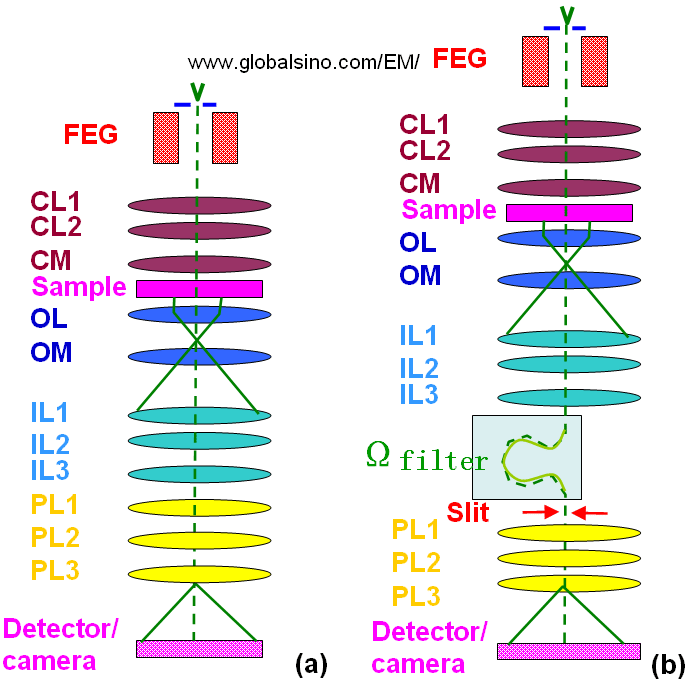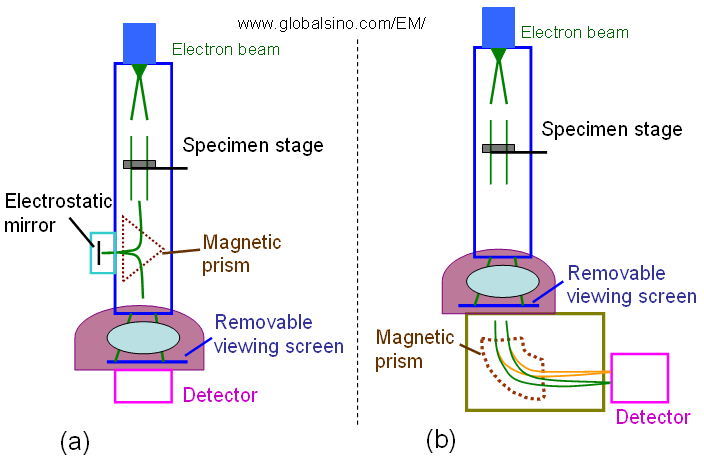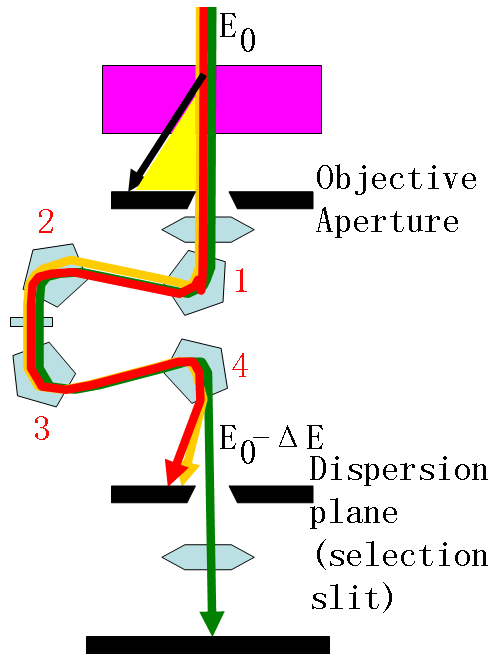=================================================================================
|
Figure 4763a. Schematic of Omega filter. |
The in-column filter is a magnetic variant of Castaing-Henry (C-H) magnetic prism or electrostatic mirror. A typical example of C-H magnetic prisms is the Omega (O) filter, pioneered by Zeiss and also applied by JEOL recently.
In order to improve the energy spread of the source, monochromators have recently been introduced. In the best cases, the energy spread with a monochromator for any source can be reduced to < ~100 meV. There are two basic setups: the Wien filter with crossed electric and magnetic fields and the electrostatic Omega filter. It is very common that both types improve the energy width to about 0.2 eV at an acceptable beam current of several 100 pA. The single Wien filter limits the probe size to about 2 nm, whereas there is no such limitation in the case of the Omega filter.
A spectrometer or energy filter as a monochromator can be incorporated into the TEM imaging column as shown in Figure 4763a. For image stability, it is important to preserve a vertical TEM column, so there are usually four magnetic prisms that bend the beam into the shape of a Greek letter tilted Ω, as named ‘omega filter’. An energy-loss (ΔE) spectrum is produced just below the filter and subsequent TEM lenses project it onto the viewing screen or onto an electronic detector.
Figure 4763b shows the schematic illustrations of a conventional TEM (a) and a typical omega-filter located between the intermediate lens and projector lens (b). The omega filter is normally about 30 cm in length. In the energy filter system in Figure 4763b (b), the lens distortion can be corrected by adjusting the magnetic field strength of the upper and lower filters.

Figure 4763b. Schematic illustration of a conventional TEM (a) and a typical omega-filter (b).
Figure 4763c compares the two commercial fixed-beam energy filters (a typical Zeiss Ω filter and a typical Gatan filter) for energy selected imaging (ESI) in TEM columns. Both can be used in EFTEM imaging.

Figure 4763c. Schematic comparison between a typical Zeiss Ω filter (a) and a typical Gatan filter (b) for energy selected imaging (ESI) in TEM columns.
|


